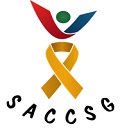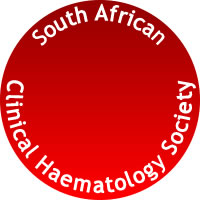Original Research
Chronic lymphocytic leukaemia trends and features at a tertiary hospital in South Africa (2011–2016)
Submitted: 07 February 2021 | Published: 29 June 2021
About the author(s)
Fungai Musaigwa, Division of Haematology, Department of Pathology, Faculty of Medicine and Health Sciences, Stellenbosch University and National Health Laboratory Service, Tygerberg Hospital, Cape Town, South AfricaRavnit Grewal, Division of Haematology, Department of Pathology, Faculty of Medicine and Health Sciences, Stellenbosch University and National Health Laboratory Service, Tygerberg Hospital, Cape Town, South Africa; and, Department of Haematology and Cell Biology, National health Laboratory Service and University of the Free State, Bloemfontein, South Africa
Akin Abayomi, Division of Haematology, Department of Pathology, Faculty of Medicine and Health Sciences, Stellenbosch University and National Health Laboratory Service, Tygerberg Hospital, Cape Town, South Africa; and, Lagos State Ministry of Health, Lagos, Nigeria; and, Faculty of Medicine, Nigerian Institute of Medical Research, Lagos, Nigeria
Carmen C. Swanepoel, Division of Haematology, Department of Pathology, Faculty of Medicine and Health Sciences, Stellenbosch University and National Health Laboratory Service, Tygerberg Hospital, Cape Town, South Africa
Abstract
Background: Chronic lymphocytic leukaemia (CLL) is a common lymphoproliferative disorder in developed countries. However, this condition is rare in Africa and there is a paucity of information on CLL, specifically on the continent.
Aim: This study described, retrospectively, the frequency, demographics and laboratory features of CLL cases diagnosed from 2011 to 2016.
Setting: Department of Pathology, National Health Laboratory Service, Tygerberg Academic Hospital, Cape Town.
Methods: A retrospective analysis was performed for all CLL diagnoses made between 01 January 2011 and 31 December 2016.
Results: Eighty CLL cases were diagnosed between 2011 and 2016. Men and women presented with the disease equally (48.8% vs. 51.2%, p > 0.05). The mean age at diagnosis was 66.79 years (range of 37–95 years) and the modal age range (36.3%) was 60–69 years. Men presented with the disease at a significantly younger age than women (mean = 64 years vs. mean = 69.5 years, p < 0.05). There were three (3.75%) human immunodeficiency virus (HIV)-positive patients (age range 43–50 years). Chromosome 13q14 deletion was found in 6 out of 19 patients (31.6%). Trisomy 12 and deletion 11q22 were found in 5 out of 21 (24%) and 7 out of 21 (33.3%) patients, respectively. Deletions 13q34 and 17p were negative for 6 and 20 patients, respectively.
Conclusion: Chronic lymphocytic leukaemia at our facility presented equally in men and women. Men presented with the disease at a younger age than women. Additionally, our findings suggested that HIV is uncommon amongst CLL patients tested for HIV.
Keywords
Metrics
Total abstract views: 2696Total article views: 3723
Crossref Citations
1. Perspectives on the Application of Cytogenomic Approaches in Chronic Lymphocytic Leukaemia
Wan Norizzati Wan Mohamad Zamri, Nazihah Mohd Yunus, Ahmad Aizat Abdul Aziz, Ninie Nadia Zulkipli, Sarina Sulong
Diagnostics vol: 13 issue: 5 first page: 964 year: 2023
doi: 10.3390/diagnostics13050964



